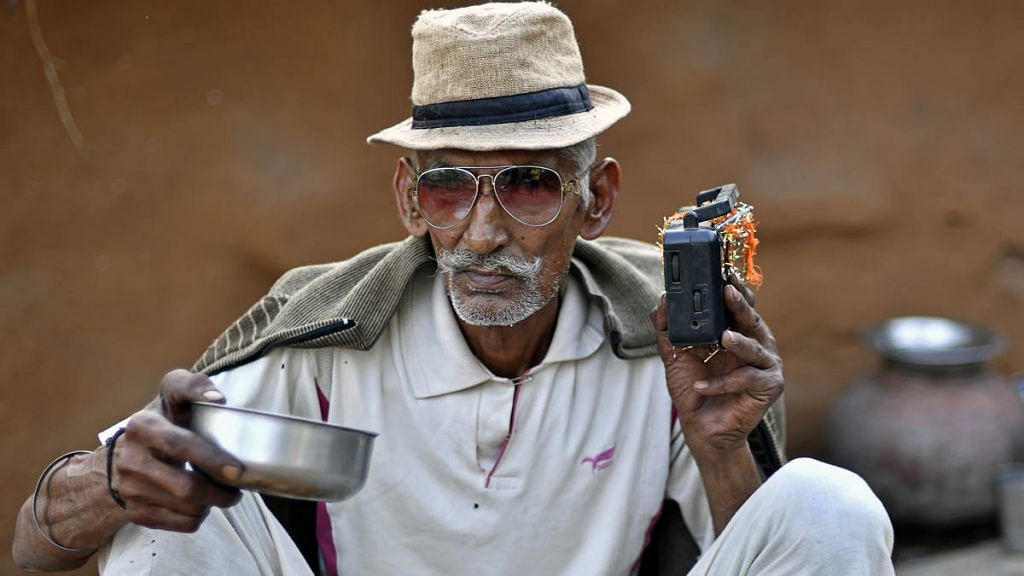India woke up late to the threat, and AIR’s proposal to counter the Chinese is stuck in the home ministry over questions of who will bear the cost.
New Delhi: Chinese radio signals are increasingly delivering shrill propaganda to sensitive Indian territories as far away as Andaman & Nicobar, as well as neighbours like Nepal and Myanmar. But a proposal to set up a strong infrastructure network to counter them has hit a dead end, courtesy the government of India and questions over who will bear the cost.
India’s security establishment woke up late to the threat anyway, but now it seems clear that the country’s response to the Chinese narrative will be further delayed.
Highly-placed sources within the Ministry of Home Affairs confirmed to ThePrint that in the last few years, China has increased its radio footprint in India, along with television and mobile communication networks. It broadcasts content which may not exactly be conducive to India’s national interest.
To counter this, All India Radio had proposed to hire 50 FM transmitters in Nepal. But authorities are confused about which stakeholder will bear the cost.
“It is yet to be decided if the Ministry of External Affairs and the Ministry of Information & Broadcasting should share the cost of the FM transmitters,” a government source said.
Sources said the Ministry of Home Affairs should bear the cost of the project since it was a matter of internal security. The proposal has since been stuck within the home ministry, and the file has been shuttling between departments.
Why the content is gaining popularity
The state-owned China Radio International (CRI) broadcasts in several Indian languages, including Hindi, Tamil and Bengali.
Sources admitted that the content was gaining increasing popularity in mainland India, particularly in the villages along the Indo-China border, because of the interesting offering of cultural and musical programmes and China-friendly news.
These sensitive areas receive loud and clear Chinese radio signals, which drown out India’s meek signals delivered by old and worn-out short-wave and medium-wave transmitters, sources said.
The proliferation of Chinese radio signals in the Andamans was first brought to the notice of the government authorities by military intelligence, and was discussed in two meetings in the home ministry nearly six months ago.
Subsequently, All India Radio had launched an FM channel in Andaman & Nicobar, and proposed to hire 50 FM transmitters in Nepal.
Also read: Prasar Bharati to shut down All India Radio’s national channel, five regional academies
Radio as propaganda tool
China’s radio network is its new propaganda tool — reports say it has been reorganising its efforts to strengthen its global influence.
A Reuters investigation in 2015 identified at least 33 radio stations in 14 countries which primarily broadcast content created or supplied by CRI, or by media companies it controls in the United States, Australia and Europe.
However, this is not the first time China is spreading its propaganda in India through the radio. During the peak of the Naxalbari movement in the late 1960s, Peking Radio played a crucial role by hailing the movement as the ‘front paw’ of the ‘Indian revolution’.
Jayadeva Ranade, security expert and president of the Centre for China Analysis and Strategy, said China had upped its propaganda globally since 2016, as part of an initial plan first thought of 2012.
“China has been exerting its influence across India, Nepal, Bangladesh and Sri Lanka. India, meanwhile, has made some half-hearted efforts,” he said.
Nepal, in particular, has turned into a hotbed of Chinese activity, with reports highlighting Chinese study centres mushrooming in the region. China is also pushing the Nepalese government to make learning a Chinese language mandatory for government servants, Ranade said.
Reports last year stated that Nepal’s education ministry officials had signed up to learn the language.
What India must do
Ranade said as a counter, India should not only immediately strengthen its transmitter network but should also beam attractive content in the neighbouring countries, especially Buddhist countries, free of cost.
“We have our strengths, but we are not utilising them. Bollywood and music, for instance, is our strength as it enjoys huge popularity in India’s neighbouring countries,” he said.
Last week, the union cabinet cleared the Broadcasting Infrastructure and Network Development Scheme of Prasar Bharati for Rs 1,054,52 crore, for a period of three years from 2017-18 to 2019-20. The scheme includes setting up of 10 kilowatt (KW) FM transmitters at the Indo-Nepal border as well as border areas in Jammu and Kashmir, in order to improve radio and TV coverage.
However, not only will the process take several years, sources said the 10 KW transmitters can send signals only up to 10 to 15 km at peak potential, and that will hardly serve the purpose.
Also read: Here’s why AIR bid to check Pakistan’s radio propaganda in Punjab is doomed to fail
This is an updated version of the report
